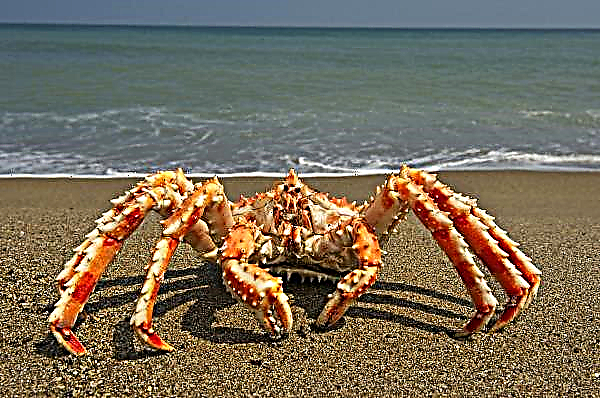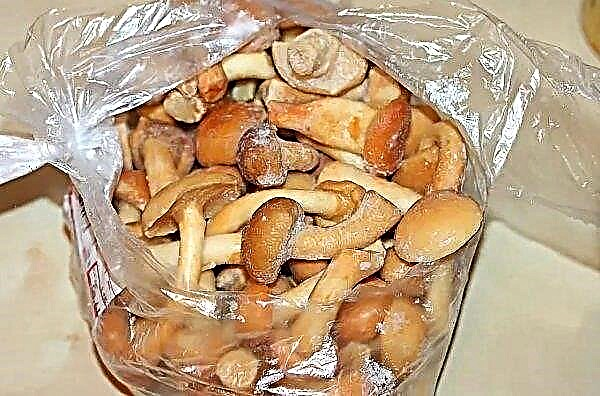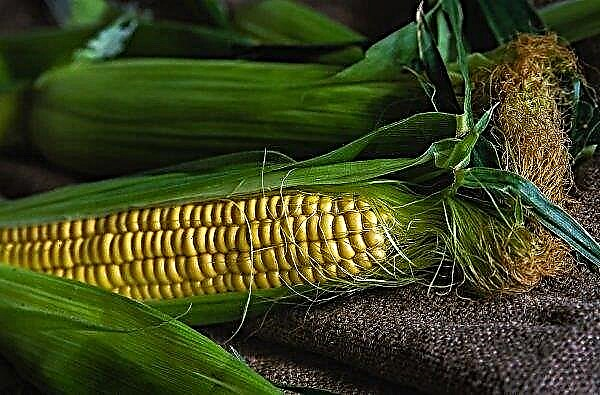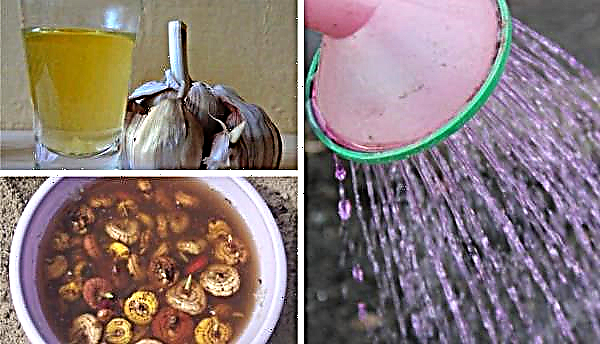Childbirth, or lambing, goats most often occur without problems and human intervention. However, there are situations when the animal needs help in such an important process. Therefore, the breeder should have information about the precursors of childbirth, the most common difficulties, especially the feeding and keeping of the goat and young animals.
How to run a goat before lambing
Running small cattle suggests that starting from the 3rd month of pregnancy, milking is stopped. This is necessary so that her body rests, prepares for childbirth and the future feeding of babies. It is also necessary to obtain high milk yield, high-quality milk and ensure stable health during the lactating period by accumulating the necessary nutrients in the body, rather than returning them with milk. The goat is usually covered twice a year. A minimum break of 1 month must be maintained between childbirth and the next coating.
The goat is usually covered twice a year. A minimum break of 1 month must be maintained between childbirth and the next coating.
Self-triggering occurs in low-yield goats and those females that carry several kids. In other cases, a person must intervene in the process in order to provoke a launch. So, starting from the 3rd month of pregnancy, it is important to carry out nutritional adjustments, which will be to reduce juicy, grain and animal feed. It is also necessary to conduct milking according to the scheme.
To reduce the amount of milk, the number of milkings will need to be reduced, and the intervals between them will need to be increased. First, the animal should be milked 3 times a day at regular intervals, for example, for 8 hours. After reducing milk yield, you need to reduce the number of milks to 2. During milking, it is important to stop stimulating the udder in the form of massage.Important! When feeding a pregnant goat, you need to carefully monitor the quality of the feed and on time to discard rotten, moldy products. Feeding poor quality food can lead to serious poisoning and complications during pregnancy.
After the goat began to produce no more than 2 liters of milk per day, it is necessary to use torn milking - to milk it not at regular intervals, but gradually add to the idle hourly. Thus, you need to go out for 1 milking per day. Then you should increase the gap between the daily milking, for example, if today milked at 7 in the morning, then the next day you need to milk at 8 in the morning. If everything is done correctly, then the milk yield should drop to 300 ml per day. After this, it will be necessary not to milk the animal at all for 2-3 days, however, pay attention to the condition of its mammary glands, and when bloating, express excess milk.
After this, it will be necessary not to milk the animal at all for 2-3 days, however, pay attention to the condition of its mammary glands, and when bloating, express excess milk.
If the goat was initially milked twice a day, then in the first week of launch, with milks of 1–1.2 l, 1 milking should be done. In the second week, the animal is milked once every 1.5 days, while it should give about 600-800 ml. In the third week, produce 1 milking in 48 hours. The amount of milk should be reduced to 300-500 ml. In the last week of launch, milking is done only when necessary.
You should be prepared for the fact that most of the highly milked goats cannot be launched. The success of the launch depends on the individual characteristics of the animal, its diet, living conditions and productivity.
Important! Breeders noted that without starting milk production in subsequent lactation decreases by 20-40% from the previous level.
Lambing Dates
The lambing period for goats usually falls on September-March. The period of gestation is 150 days. As a rule, there are 2 kid in the litter. The optimal quantity is 3. If there are more kids, this can negatively affect the passage of labor and the health of the woman in labor.
Signs of birth in a goat
An attentive owner who knows how to learn about the approach of lambing will notice signals from the goat’s body, as well as changes in its behavior.
 Goat udder swelling as a sign of early birth The following signs will testify of an early birth:
Goat udder swelling as a sign of early birth The following signs will testify of an early birth:
- udder swelling;
- viscous discharge from the genitals;
- raising the temperature in the udder;
- the appearance of two fossae on both sides of the root of the tail, indicating the beginning of the divergence of the pelvic bones;
- opening of the vagina - occurs 2-3 hours before lambing.
Goat behavior before lambing
It is possible to determine that the birth will soon begin, by the way the animal behaves.
For him, this behavior becomes characteristic:
- prepares the litter, often adjusting it with the foot;
- often lays on the litter on the right side;
- shows concern;
- looks at the stomach;
- seeking solitude;
- shows aggression about other animals that entered its territory.
Did you know? At the beginning of the twentieth century, during the World Congress of Children's Doctors in Paris, it was recognized that goat milk is the best natural substitute for human milk. It is 5 times better absorbed by the human body than the cow, it is able to remove radionuclides, hypoallergenic.
How to take birth
As soon as you notice changes in the animal’s behavior and characteristic features, the goat needs to be transferred to a separate room with certain parameters:
Find out also

- temperature + 15–16 ° С;
- humidity 70–75%.
A feeder and a drinking bowl with non-cold water should be installed in the room.
You should also prepare such items:
- Paper towels.
- Towels made of fabric.
- Garbage bags.
- Hair dryer.
- Iodine.
- Hand sanitizer.
- Knife or scissors.
- Paper and pencil for recording the onset of labor and the time of birth of each kid.
- Sweets for goats.
After the appearance of the cork, amniotic fluid and bubble exit. Some breeders offer the goat drink this water.
Then the contractions begin. The kid comes out with its front legs and head. It is also possible that the head comes out first, and the legs are squeezed under the stomach: it happens that childbirth passes normally and in this position. If the goat is hard to give birth to, it will need to be helped - in the interval between contractions, fingers feel for the legs and bring them forward.
Video: goat birth
If the pregnancy is multiple, then the kids go out at intervals of several minutes. If the umbilical cord does not break off on its own, it will need to be cut with a knife or scissors, bandaged at a distance of 2-3 cm from the abdomen of a kid and greased with iodine. The first lambing normally lasts from 1 to 1.5 hours. Subsequent births are usually more rapid, can occur in 30-40 minutes.
What to do in case of complications
Unfortunately, births may not always go smoothly.
The most common problems are:
- With the correct position of the fetus, the exit of his head does not work. In this case, it is necessary to treat the hands with disinfectants, and the vagina with vaseline and between the contractions, pull the head to the exit.
- If the fetus goes wrong, it is urgent to call a veterinarian.
- An urgent appeal to a specialist will be required if the goat has paresis of the hind limbs.
- The fruit is too large, and the goat cannot be born. In this situation, only a specialist will help, who will dissect the vagina or womb.
- The exit of the fetus as a whole amniotic fluid. The bubble must be cut immediately, otherwise choking will occur.

Features of winter lambing
Births in goats often occur in winter. At this time, it is important to ensure that the room temperature does not fall below +10 ° C, the litter is dense and thick, and the water for drinking is not cold. It is advisable to install heaters.
The kids that are born in the winter have a stronger immune system, they are less likely to get sick, grow faster.
There is an opinion that goats that have soaked in the winter subsequently produce more milk.
Afterbirth
The last leaves after some time after the birth of the last kid. His non-appearance is considered a pathology.
The aftermath does not come out
In the first 4 hours, no action is needed. If the last did not appear at the end of this time, then the goat should be given a drink of flax decoction (2 small tablespoons of crushed seeds per 1 cup of boiling water, boil for 10 minutes) or warm wine. If the placenta does not come out over the next 10-12 hours, veterinarian intervention will be required.
If the placenta does not come out over the next 10-12 hours, veterinarian intervention will be required.
Goat ate last
You need to know that often the animal eats the placenta - this is normal, this is what its wild relatives do. Thus, it uses the necessary valuable elements that are contained in the aftermath.
Goat nodded: what to do next
After lambing, mother and kids are already needing human help. It will consist in the care of the babies and mother, their separation and proper feeding.
Treatment and further care of kids
When the kids were born, it is necessary to carry out the following manipulations:
- Wipe with straw.
- To clear nasal passages and a mouth of mucus.
- Dry with a hairdryer.
- Put under mom so she can lick them.
 Kids can be weaned from their mother right away, feeding them milk on their own, or giving them the opportunity to drink colostrum - it is believed that this strengthens the immune system.
Kids can be weaned from their mother right away, feeding them milk on their own, or giving them the opportunity to drink colostrum - it is believed that this strengthens the immune system.After lambing, the babies are placed in a box covered with straw, covered with a warm cloth and a heating lamp is turned on.
With self-nursing, newborns are fed 4 times a day. After a month, the milk is diluted with water and other feeds are gradually introduced. From 3 months, babies should already fully switch to "adult" nutrition.
Did you know? The most expensive goat in the world was the representative of the highly productive Saanen breed. In 1995, it was sold for 5 thousand 300 dollars.
Goat care
Immediately after childbirth, the mother is drunk with water heated to 40 degrees, after dissolving 3-4 large tablespoons of sugar and 2-3 large tablespoons of salt (per 10 liters of water) in it. Instead of water, you can give dill broth.
Maternity hay is offered 1.5 hours after lambing. Watering continues every 3-4 hours.
After 4 days of feeding with easily digestible feeds, the goat is offered:
- hay - up to 2 kg;
- branch feed - up to 1 kg;
- root crops - up to 3 kg;
- bran - 400 g;
- concentrated feed - up to 500 g;
- salt - up to 10 g.
Colostrum, which appears in the first hours after lambing, is most often fed to newborns. After this happens, they are excommunicated. A person starts milking 5 times at regular intervals. From the second week you will need to switch to a 4-time milking. Before the process, a massage and rubbing of the mammary glands are mandatory.
To increase the amount of milk, the goat is fed with bran mashrooms, silage, hay, and later - grain, oilcake, vegetables.
Important! Crushing can begin without waiting for the afterbirth.
The first lamb of the goat: what you need to know
The first-born goat is likely to need help, because she still does not know what is happening to her and how she needs to act. It is better to invite a veterinarian for help. If this is not possible, then you just need to first observe and if everything goes smoothly, do not interfere with the process. If you need help, you should provide it.
Birth in a goat can occur at any time of the day. Therefore, with the appearance of obvious signs of fast lambing, you will have to get up at night to monitor the condition of the future woman in labor and not miss the beginning of the delivery process.
How much milk does a goat give after lambing?
The amount of milk will depend on the breed, the individual characteristics of the animal, the conditions of its maintenance and feeding. The first-born are distinguished by the highest rates: they are capable of giving up to 7 liters per day. Representatives of the Saanen, Alpine and Toggenburg breeds are considered the best in terms of milk. Their daily milk yield is 6-8 liters. Thus, goat lambing usually occurs without participation, but under human supervision. However, each owner needs to know how the birth normally proceeds and how to act in case of complications. He also needs to learn how to properly launch and distribute goats.
Thus, goat lambing usually occurs without participation, but under human supervision. However, each owner needs to know how the birth normally proceeds and how to act in case of complications. He also needs to learn how to properly launch and distribute goats.












